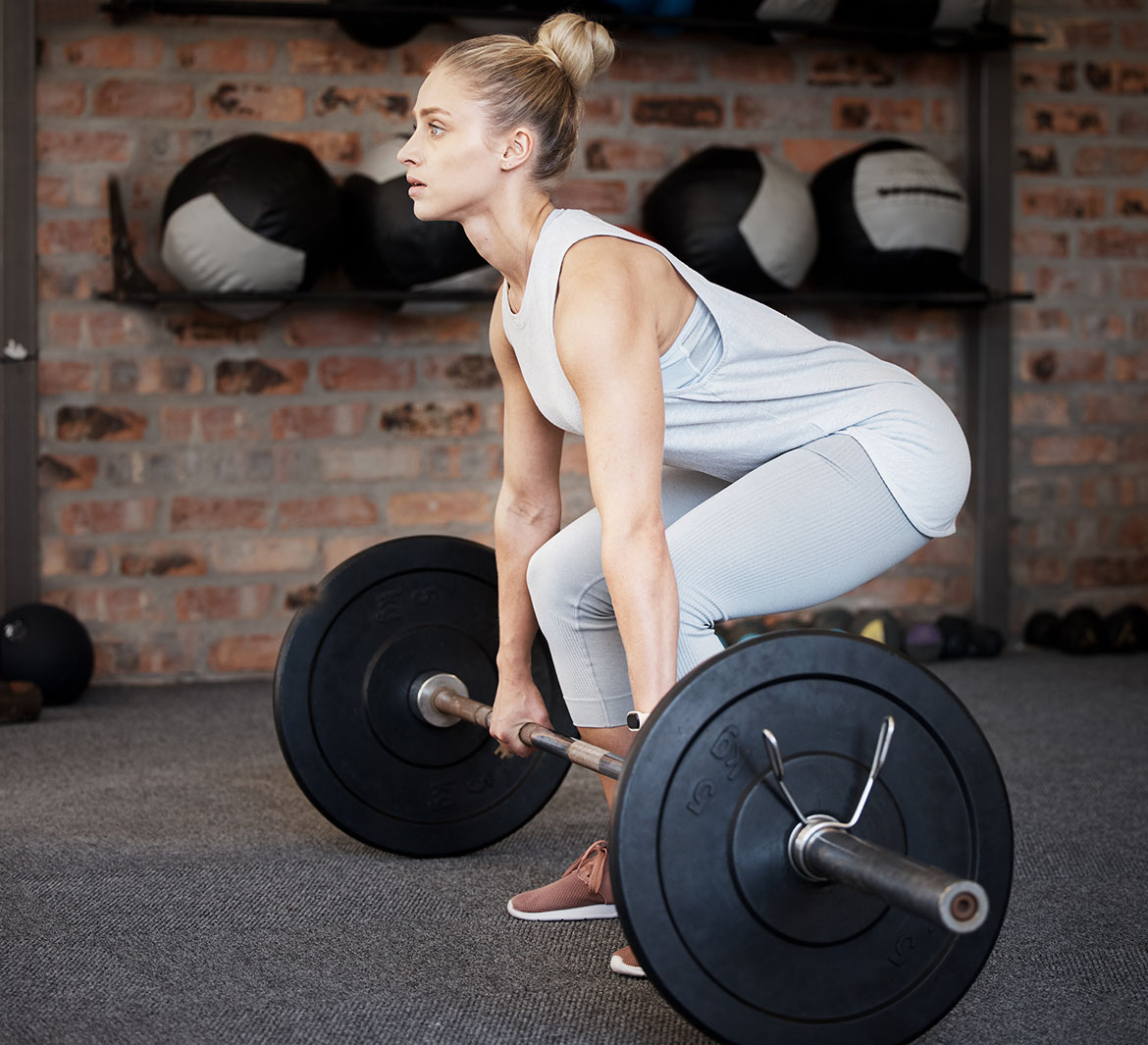by louise hurley, MumSafeTM Trainer of the Year 2022
Let’s set the record straight: women can – and absolutely should – lift heavy weights. It’s not a trend or a passing phase. It’s backed by science, and it’s one of the best things we can do to future–proof our bodies. Strong muscles and solid bones are essential for long–term health and independence as we age.
For years, there’s been hesitation around women building muscle. And honestly, I think a lot of it stems from the unrealistic and outdated beauty standards we’ve grown up with. We’re told that small and slender is beautiful, while strong and solid is somehow “too much.” Not too long ago, it was rare to see women in the weights room. Fast forward to today and thankfully there’s been a huge shift in how women approach movement. Strength training is finally being seen for what it is—powerful, empowering, and essential.
So why all the hype around lifting heavy? Let’s sort the facts from the fiction and bust a few common myths along the way.
Myth #1: Lifting heavy will make you bulky
The idea that lifting weights will turn you into the female version of The Rock is simply not true.
Reality check: Building significant muscle mass requires a very specific set of conditions: high testosterone levels (which women naturally don’t have), a strict high–calorie, high–protein diet, and a training schedule that looks like a full–time job. For most of us, getting “bulky” is really hard – especially if we’re just lifting a few times a week. What you will get from lifting heavy is improved strength, body composition, and confidence.
Myth #2: Lifting heavy is dangerous.
“Careful, you’ll hurt yourself!” Sound familiar? It’s a common concern, especially for women who haven’t lifted before.
Reality check: Like anything, lifting weights has risks if you’re doing it with poor technique or pushing beyond your limits too soon. But when done properly, strength training actually reduces injury risk—especially for things like back pain and bone fractures. This is particularly important post–menopause, when bone density naturally starts to decline. Start with guidance from a qualified coach, use progressive overload, and lifting becomes one of the safest (and smartest) things you can do.
Myth #3: Strength training is bad for ageing joints.
Nope, the opposite is true.
Reality check: Lifting weights increases bone density, strengthens muscles, and improves the quality of your connective tissues. Over time, that means less stiffness, better mobility, fewer falls, and a much lower risk of fractures. If you’re lucky enough to grow older, strength training will help you stay active and independent for longer. What’s not to love about that?
Myth #4: I’ve had kids, so lifting heavy is off the table.
This is a big one, and it’s understandable that many women are cautious post–birth.
Reality check: After having a baby, most women need some form of pelvic floor rehab – especially if they’re dealing with issues like pelvic organ prolapse. But that doesn’t mean you’re ruled out from lifting heavy weights forever. With the right support from a women’s health physio and a MumSafe™ trainer, you can safely return to lifting. It just takes time, a plan, and the right team in your corner.
Myth #5: Lifting weights makes you gain weight.
Here’s where scale obsession can get in the way of real progress.
Reality check: Yes, muscle and bone weigh more than fat – so the number on the scale might creep up. But that number tells you nothing about your strength, resilience, or overall health. In fact, the more muscle you have, the higher your metabolism runs – which means you’ll burn more energy, even at rest. Stronger bones, better posture, increased energy and a boost in fat–burning? Sounds like a win to me.
So how do you start lifting heavy?
The definition of “heavy” will vary from person to person – it all depends on your current level of strength. As a general rule, a heavy weight is about 70 percent of your one – rep max (that’s the most you can lift once). But you don’t need to get too technical when you’re starting out.
Begin with a weight that feels challenging by rep 8, and increase gradually as you gain confidence.
Form always comes first. If you’re unsure where to begin, don’t wing it – find a qualified trainer who can help you ease in safely and progressively. That way, you’re building strength and avoiding injury.
And if you love other forms of movement – keep them in your life! Just think of strength training as the protein in your exercise diet. It supports everything else you do, and your body will thank you for it.
Louise Hurley, owner of Strong Mums and the Body Resilient Mum podcast is on a mission to help mums to return to exercise safely and realise that they are so much more than what their post–baby body looks like, at any stage of motherhood. Find out more at www.strongmums.com

